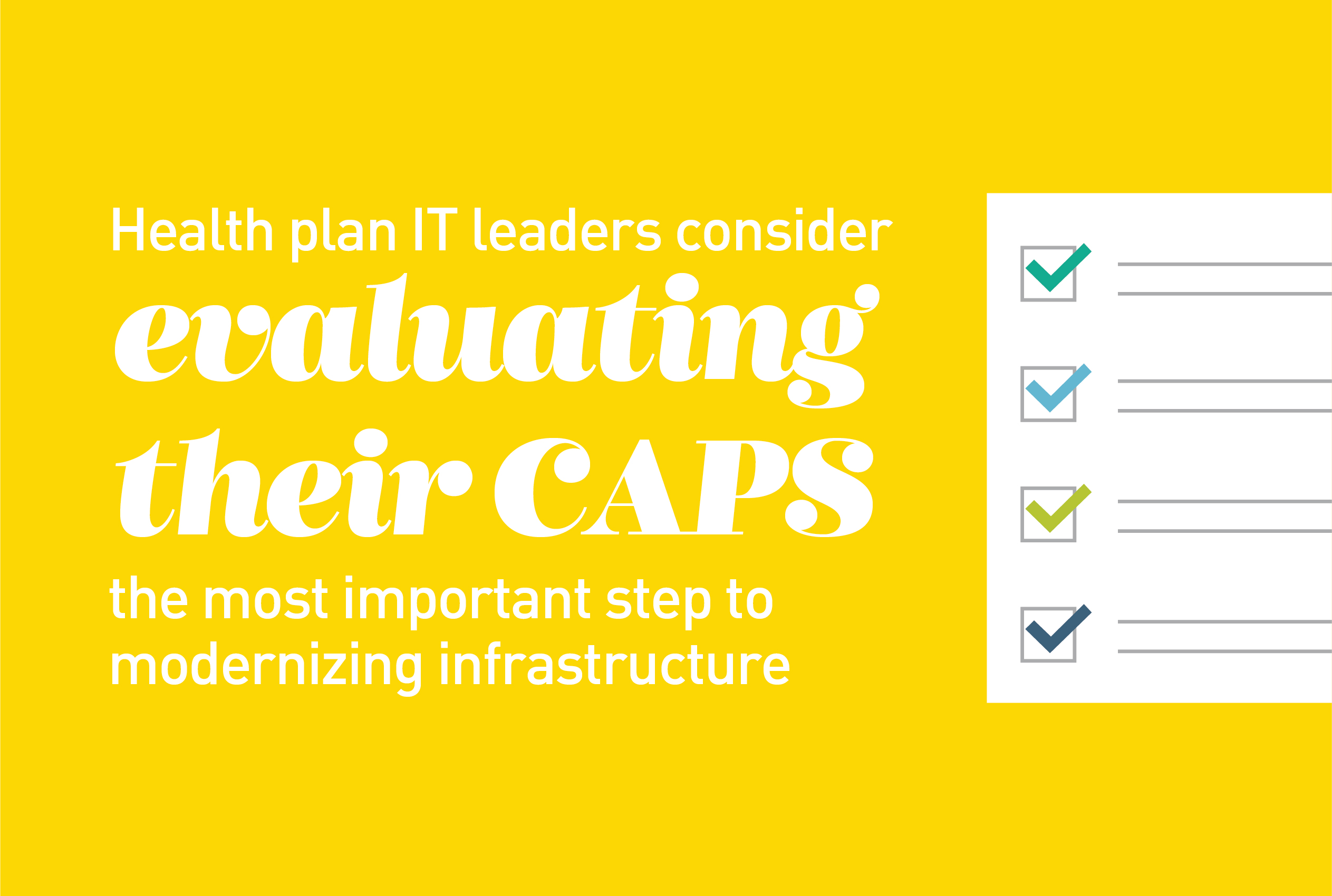A recent study of 245 IT executives at leading health insurance companies revealed that larger health plans are interested in consolidating core systems to improve overall operations and cloud migration/technologies. The majority of respondents at larger health plans (61 percent) indicated that they plan to evaluate their core administrative processing system within the next two years.
In collaborating with health plans of diverse sizes and geographic spans, we find they all share similar challenges: improving member and provider satisfaction, cultivating brand loyalty, standing up new lines of business, staying on top of competitive pressures, improving operational efficiency, driving innovation, and maintaining regulatory compliance – all areas of opportunity given modern technology.
Where we find that plans differ considerably is in the approach, scope and dependencies involved in finding solutions to these challenges. The largest, nationally-focused health plans typically evaluate solutions from both local and global perspectives, looking at issues from the big picture within their organization alongside individual project requirements. While the immediate challenge being addressed may be highly specific to the needs of a geographic region or a line of business, they must take into account broader considerations such as corporate-wide IT initiatives, project prioritizations, resource allocation, existing technical debt as well as assets that could be capitalized on, the potential for solution application across other regions or lines of business, and more.
Whether on a broad national scale or in regionally-based health plans, data integration is also a significant opportunity when modernizing—for both internal- and external-facing purposes. From an internal perspective, key decision-makers require the ability to analyze comprehensive, up-to-date, well-structured data from across the enterprise in a single place to make business-critical decisions for the entire organization. From an external perspective, centralized access to real-time, accurate, enterprise-wide data is essential to creating a cohesive and meaningful customer experience across a health plan’s spectrum of products.
Due to their size, diverse regions and lines of business, and often a history of growth through acquisition, many larger plans have accrued numerous systems over time. These may include applications running on aging technology and/or requiring multiple surrounding point solutions to run effectively, creating all sorts of additional integration challenges. Maintaining this type of complicated ecosystem dramatically impacts the IT costs and resources required to keep all the components current and updated. The integration between these systems and solutions is crucial for delivering on innovation strategies and the overall success of the business. Today’s technology can solve these considerations – with the added bonus of agile implementations that require less time and disruption, which is to be expected compared to systems implemented 10-15 years ago.
In alignment with these findings and observations, we’ve found that while the pain associated with many of the challenges outlined can be more acute the larger the plan, all health plans need a highly interoperable, real-time technology platform that can handle multiple lines of business (LOBs), with the flexibility to react quickly to shifting market dynamics and the reusability to configure and streamline a diverse set of benefit plans and provider contracts. They also need the assurance that their leading-edge platform delivers scalability and versatility to extend across the business, using “Lego” like software that allows for reuse along with regional/LOB configurability. This provides the agility necessary to orchestrate technology implementations across regions and LOBs based on an organization’s unique drivers and dependencies.
Health plans need a technology partner with next-generation solutions that understands, appreciates, and can help to address the big picture.






